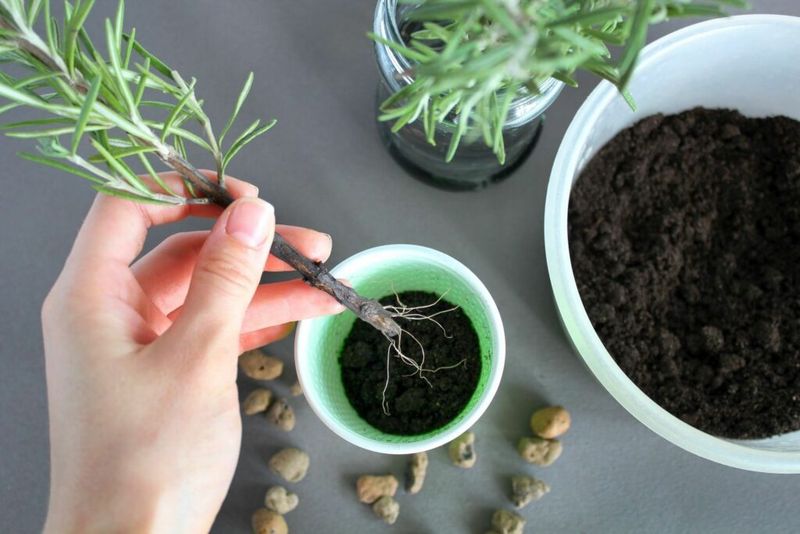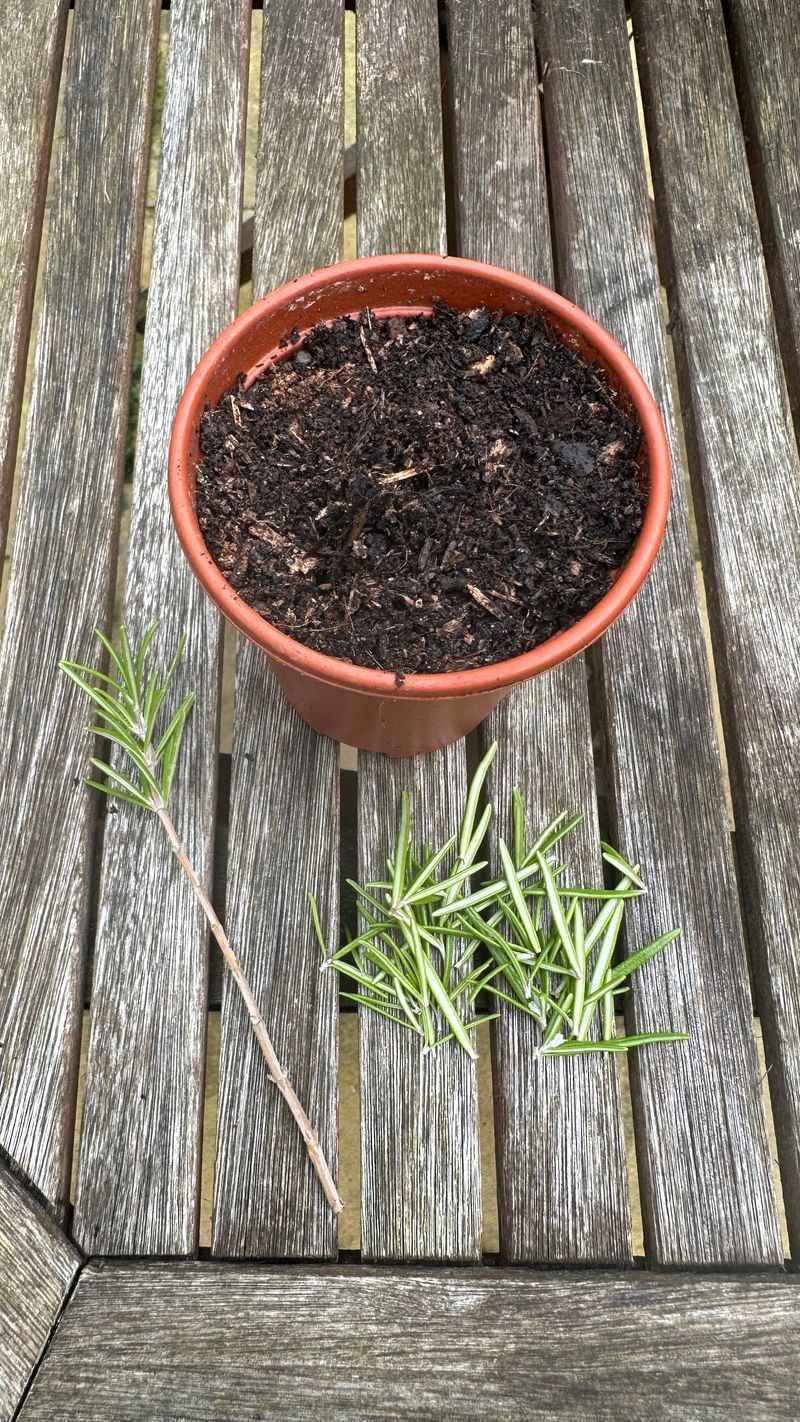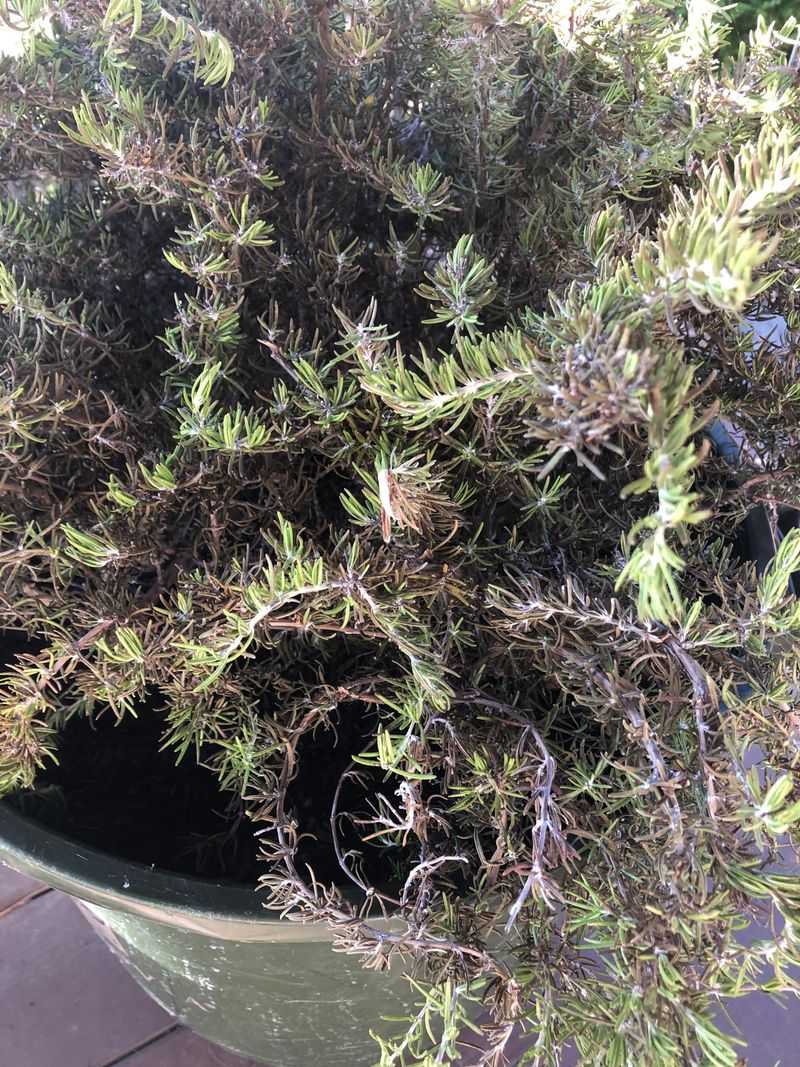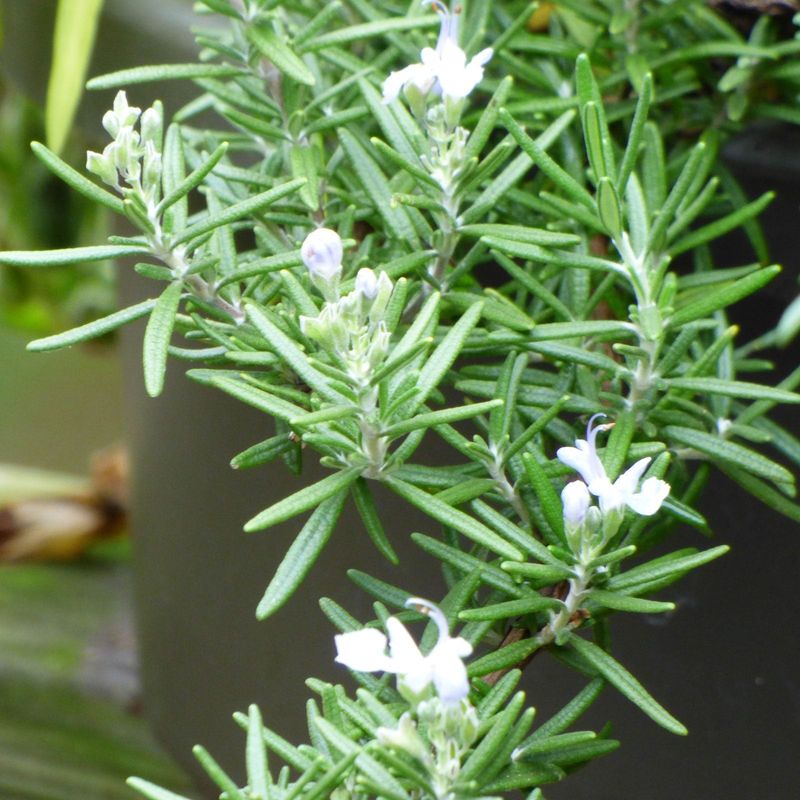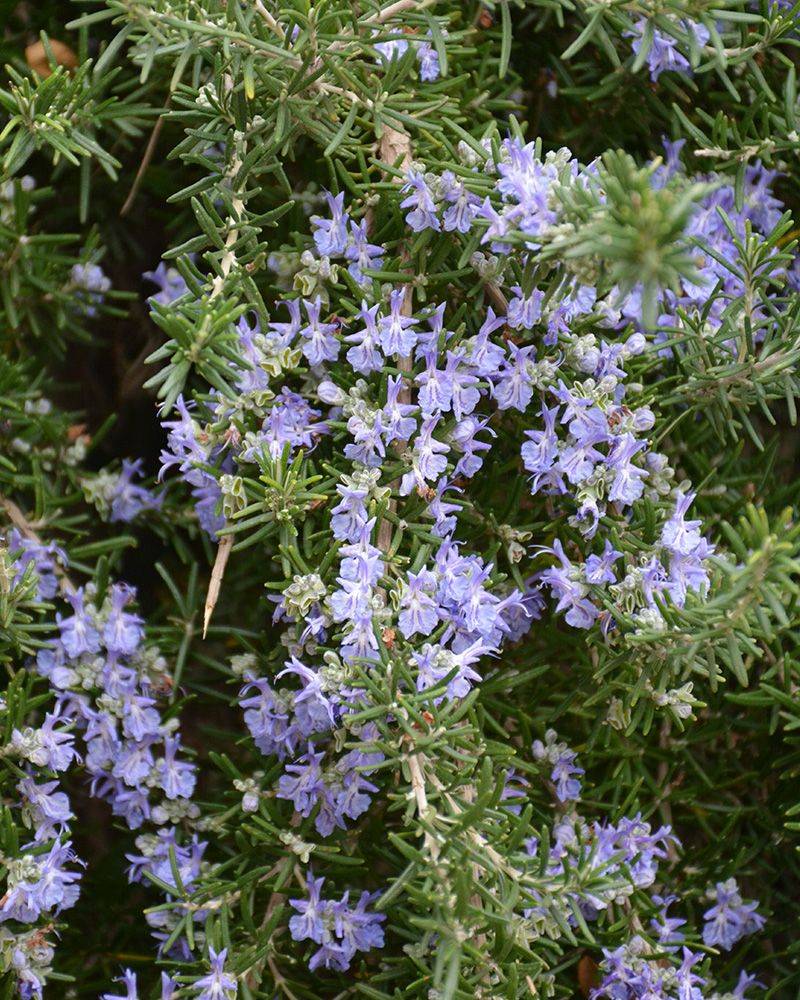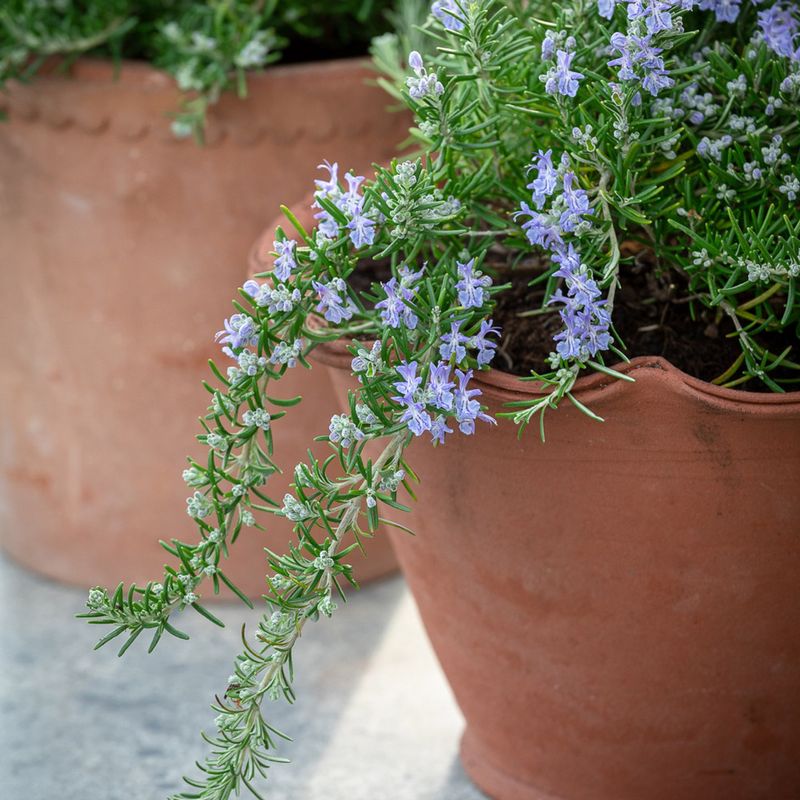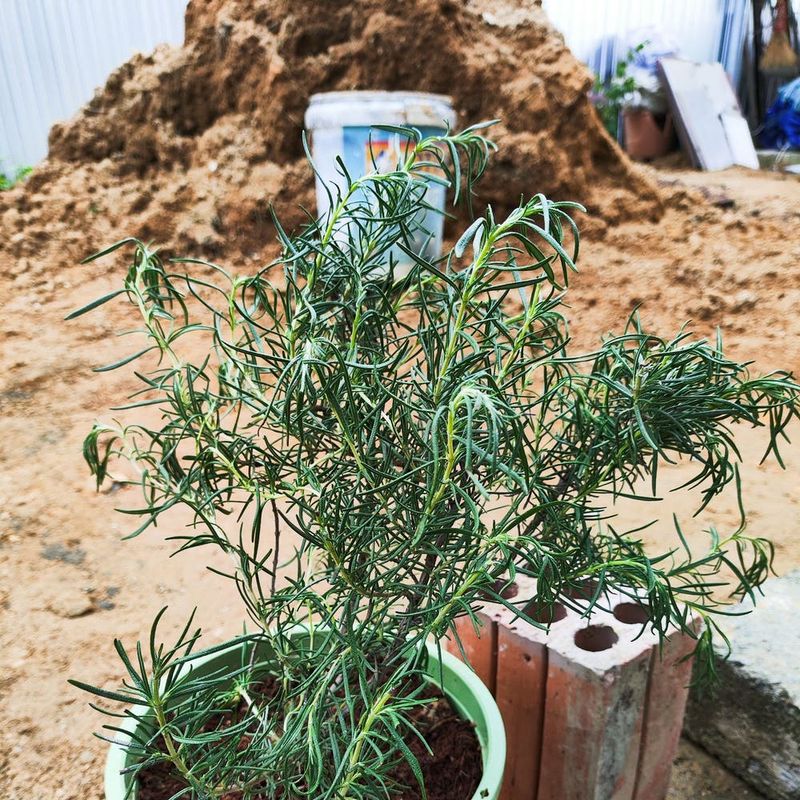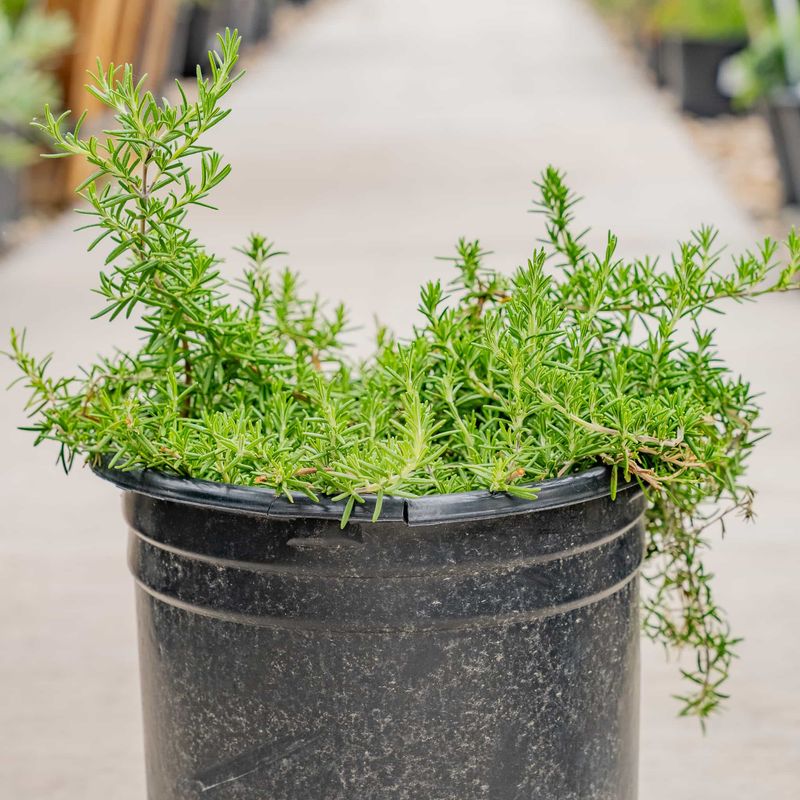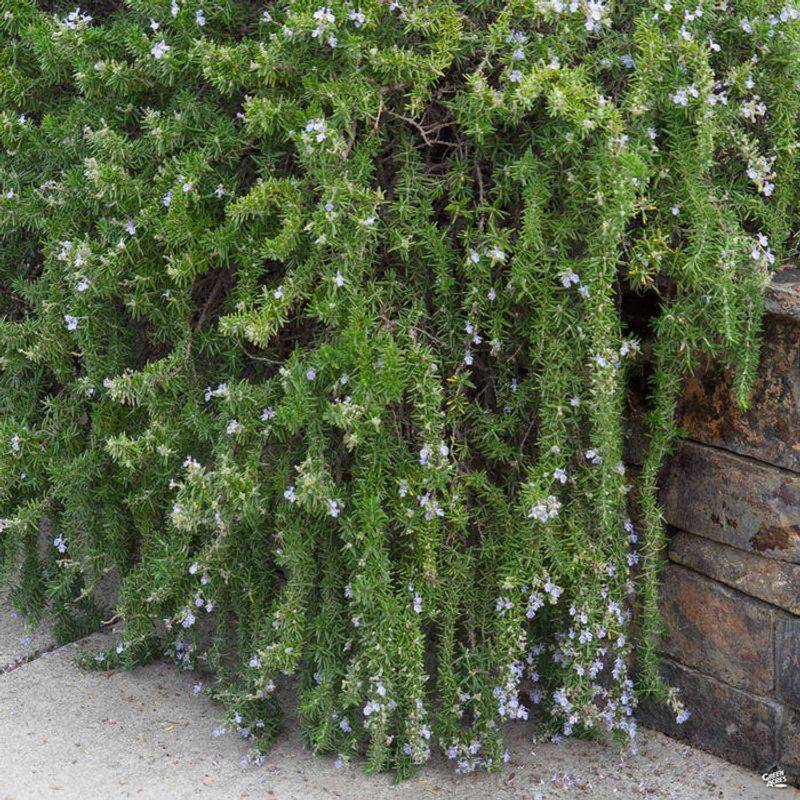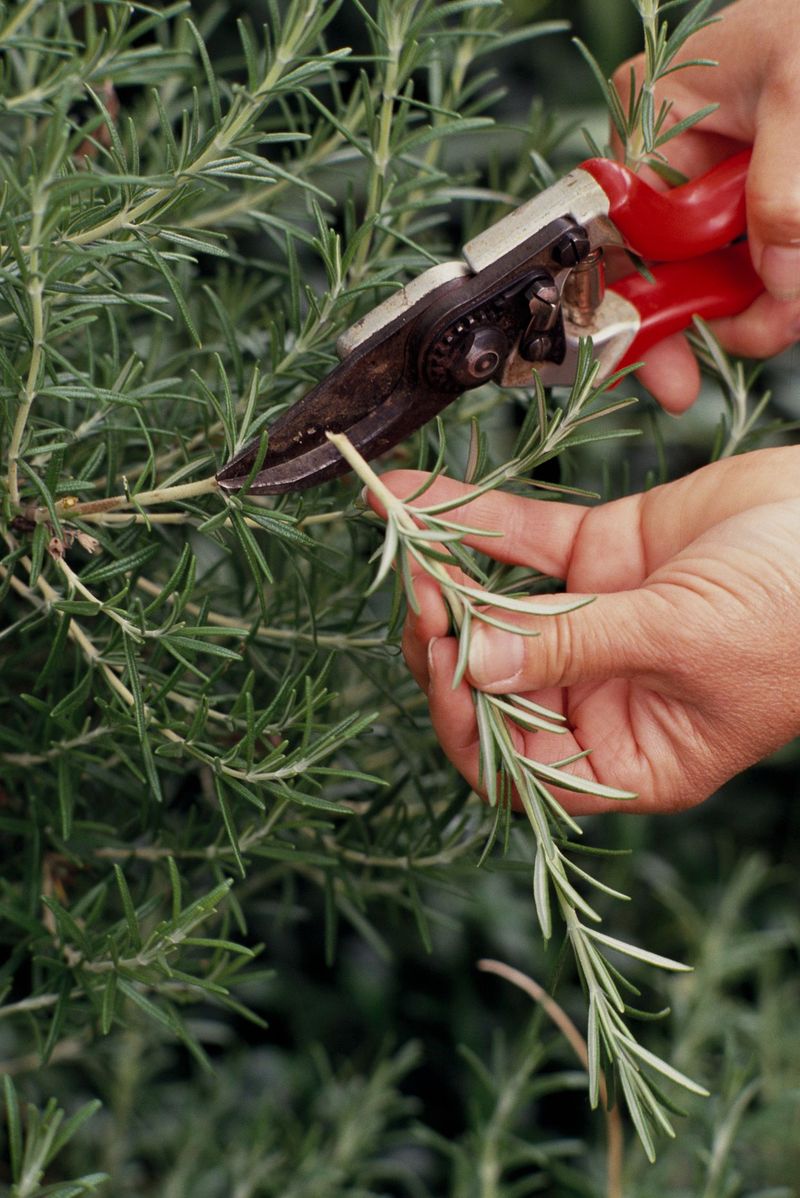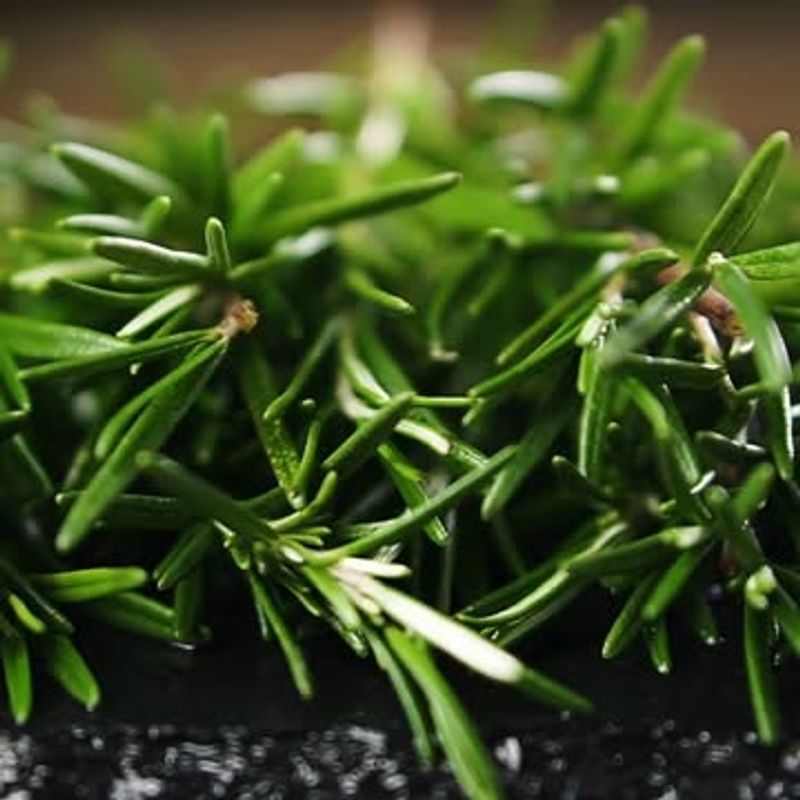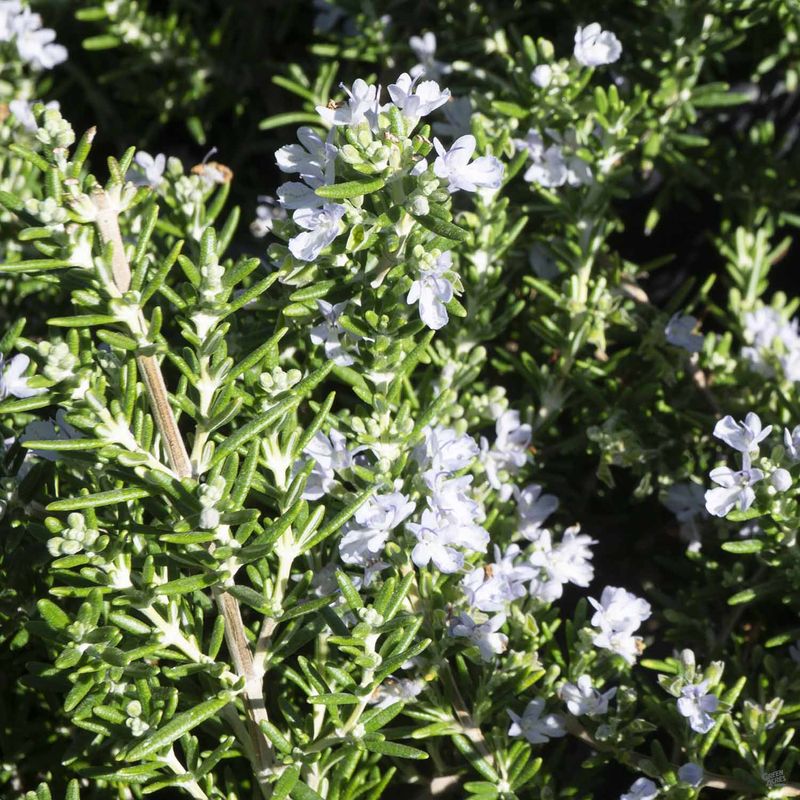I’ll be honest—when I first planted trailing rosemary, I had no idea it would become one of my favorite parts of the garden. It started as a little experiment, something I thought might spill nicely over a pot.
Fast forward a bit, and now it’s practically a little green waterfall that smells incredible every time I walk by. If you’re thinking about growing it too, I’m genuinely excited for you. It’s low-maintenance, smells amazing, and it looks stunning.
So, here are some super simple steps I’ve picked up (some the easy way, some… not so much), plus a few common mistakes to steer clear of. This is your rosemary-growing cheat sheet.
1. Choose The Right Spot
Selecting the perfect location for your rosemary is like picking the right seat at a concert. You want full sun, well-drained soil, and protection from harsh winds.
Your rosemary will enjoy basking in the sun, soaking up all the warmth it can get. Keep it away from overly wet areas. Rosemary doesn’t fancy soggy soil.
Pick a spot where rainwater doesn’t pool, and where the sun’s rays sing to it all day long. A happy rosemary plant will reward you with growth and aromatic leaves.
2. Pick Quality Seeds Or Cuttings
Embarking on your rosemary journey starts with quality seeds or cuttings. Think of it as choosing the best ingredients for a recipe.
Seeds can be a challenge, so cuttings might be your best bet if you’re not yet a seasoned gardener. Healthy cuttings from a friend’s thriving plant are like getting a secret family recipe.
They’ll ensure that your new plants have a strong start. Remember, good beginnings lead to great endings, and in this case, a fantastic rosemary harvest!
3. Soil Preparation
Preparing the soil is akin to laying the foundation for a house. Your rosemary plants need loose, well-draining soil with a slightly alkaline pH. Mixing in compost not only enriches the soil but also prevents compaction.
Think of it as adding a dash of magic to your garden. Rosemary dislikes heavy clay, so ensure the soil is crumbly and inviting.
This preparation stage sets the stage for healthy roots, enabling them to spread and thrive. A bit of effort here reaps fragrant rewards later.
4. Planting Time
Timing is everything, and this is no exception. Early spring is the perfect time to get those roots in the soil. Think of it like arriving fashionably early to a party.
Avoid frost, as rosemary shivers at the thought. Planting when the soil is warm and the risk of frost has passed ensures a strong start.
You’ll find yourself gently placing each plant into the welcoming earth, knowing you’re setting the stage for a beautiful, aromatic journey. Timing it right makes all the difference.
5. Water Wisely
Watering rosemary is like making a perfect cup of tea. Too much or too little can spoil it. Rosemary enjoys a drink but hates to drown.
Water thoroughly but infrequently, allowing the soil to dry out between watering sessions. Think of it as letting your plant enjoy a refreshing sip without overindulging.
Overwatering is a common mistake, leading to root rot and unhappy plants. By mastering the art of watering, you’ll keep your rosemary healthy, and ready to flavor your favorite dishes.
6. Prune Regularly
Be careful with this one. Pruning rosemary is like giving it a stylish haircut. Regular trimming encourages bushy growth and prevents legginess.
Think of it as a spa day for your plant, rejuvenating it with each snip. Focus on cutting just above a leaf joint, and don’t be shy to shape it to your liking. Over-pruning, though, is a mistake that could stress your plant.
A little trim here, a little snip there, and your rosemary will thrive, looking groomed and gorgeous, ready to grace your garden with its aromatic charm.
7. Fertilize Sparingly
When it comes to fertilizing rosemary, less is more. Your rosemary will be as someone who enjoys a good meal but doesn’t overindulge.
A light feeding once or twice during the growing season with an organic fertilizer is all it needs. Over-fertilizing is a mistake that can lead to excessive growth and reduced flavor.
Think of it as seasoning your food just right. By keeping it simple and sparing, you’ll ensure your rosemary is flavorful, healthy, and a delight to have around your garden.
8. Ensure Proper Air Circulation
Good air circulation is the secret to happy rosemary. Your rosemary will be enjoying the fresh air. Proper spacing allows each plant to breathe and reduces the risk of fungal diseases.
Like a dancer needing room to twirl, your rosemary thrives best with space to spread its aromatic branches. This avoids the common mistake of overcrowding, which can lead to unhealthy plants.
Give your rosemary the room it craves, and it’ll reward you with a healthy, flourishing presence.
9. Monitor For Pests
Keeping an eye out for pests is like being a vigilant guardian of your rosemary. Common pests include aphids and spider mites but fear not. They’re usually easy to manage.
Regularly inspect the leaves and stems, and act swiftly if you spot anything unusual. A gentle spray of water or an insecticidal soap can do wonders.
Avoid harsh chemicals, as they may harm the plant more than help. By being attentive, you’ll protect your rosemary, ensuring it remains and thriving part of your garden.
10. Mulching Matters
It helps retain moisture and keeps weeds at bay. Use organic mulch such as bark or wood chips but keep it a few inches away from the stems to avoid rot.
Think of it as providing a cozy, protective layer for your plants. By mulching wisely, you’ll create a healthy environment that nurtures your rosemary, keeping it happy and hydrated.
Avoid common mistakes like piling too much mulch, which can suffocate your plant.
11. Companion Planting
Certain plants, like thyme and sage, make perfect partners, enhancing growth and flavor. Avoid plants that compete for nutrients, like cucumbers.
Proper companions can deter pests and enhance growth, while poor choices can hinder progress. By selecting the right garden companions, you’ll cultivate a thriving, aromatic oasis that delights the senses.
12. Avoid Overcrowding
This is a common mistake in gardening, and rosemary is no exception. Crowded plants compete for nutrients and are more prone to disease.
By giving each rosemary its personal space, you’ll ensure it grows strong and healthy. It’s like hosting a party where every guest has room to mingle and enjoy.
Avoid the temptation to squeeze too many plants into a small area. Instead, let them flourish with room to breathe and grow.
13. Control Weeds
Weeds are the uninvited guests in your rosemary garden. They compete for nutrients and can overshadow your plants. Regular weeding is like housekeeping for your garden, keeping it neat and healthy.
You’ll find yourself pulling weeds with determination, knowing you’re giving your rosemary the best chance to shine. Use mulch as a barrier and be vigilant.
By keeping weeds at bay, you’ll allow your rosemary to thrive, free from competition and stress. It’s a simple step that makes a world of difference in your garden.
14. Protect From Frost
Frost is rosemary’s enemy, and protecting it is crucial for survival. Use frost cloths or move potted plants indoors during harsh weather.
It’s like offering a warm hug to your plant, keeping it safe from the cold. This small gesture ensures your rosemary survives the winter and emerges ready to flourish in spring.
Avoid the mistake of neglecting frost protection, as it can lead to damaged, unhappy plants.
15. Container Gardening With Rosemary
Growing rosemary in containers adds versatility to your garden. Put a lovely pot on your patio, filled with aromatic rosemary, ready to be clipped for culinary delights.
Containers allow you to move plants to the best location, safeguarding them from harsh weather. Good drainage is key, so select a pot with holes and quality soil.
It’s like having a portable garden, ready to adapt to your needs. Container gardening offers flexibility and beauty, making rosemary accessible and thriving anywhere.
16. Using Rosemary In Cooking
Rosemary isn’t just a pretty plant. It’s a culinary star. You’ll be sprinkling freshly cut rosemary over roasted potatoes or infusing it into olive oil.
The aroma fills your kitchen, adding a touch of elegance to your meals. It’s like inviting a fragrant guest to dinner, enhancing flavors with its unique touch.
Harvest sparingly to keep the plant healthy, but don’t shy away from experimenting. Rosemary’s culinary uses are vast, turning ordinary dishes into gourmet experiences.
17. Understand Rosemary’s Growth Cycle
Understanding rosemary’s growth cycle is like knowing the rhythm of a favorite song. Recognize when it’s actively growing and when it’s resting.
Spring and summer are its active seasons, while winter is a time to conserve energy. You’ll be in tune with your plant, knowing when to prune, water, and feed. This awareness helps avoid common mistakes like over-fertilizing during dormancy.
By aligning with rosemary’s natural rhythm, you’ll nurture a thriving, harmonious plant that’s in sync with nature’s dance.
18. Avoid Heavy Clay Soil
Heavy clay soil is rosemary’s kryptonite. Try to grow in a dense, unyielding medium. It stifles roots and retains too much moisture, leading to rot.
Choose sandy or loamy soil instead, providing a breathable environment. That airy feel is what rosemary craves. Avoid the mistake of planting in clay without amending it first.
By choosing the right soil, you’ll set the stage for a healthy, thriving plant eager to grow and flourish.
19. Harvesting Tips
Harvesting rosemary is like picking the ripest fruit from a tree. Snip sprigs from the top, encouraging bushier growth. You need to be gently clipping, savoring the fresh aroma.
Avoid cutting too much at once, as it can stress the plant. Focus on the tender, young stems for the best flavor. Think of the idea of a kitchen filled with rosemary’s delightful scent, knowing each harvest is a reward for your care.
By following these tips, you’ll enjoy a continuous supply of fragrant sprigs, ready to enhance your culinary adventures.
20. Dealing With Poor Growth
Poor growth can be disheartening, but it’s often a solvable puzzle. You will be observing every detail. Check soil, water, light, and pests to identify the issue.
Sometimes, a simple change makes all the difference. You’ll find yourself adjusting watering habits or moving the plant to a sunnier spot. Avoid the frustration of ignoring the problem, as early intervention can revive struggling plants.
With patience and care, you can turn poor growth into a success story, celebrating each new sprig with joy.
21. Using Rosemary For Aromatherapy
Rosemary’s aromatic properties extend beyond the kitchen. Its invigorating scent will be lifting spirits and clearing the mind. Use rosemary in diffusers or make sachets for a calming effect.
It’s like having a natural spa at home, offering relaxation and clarity. Avoid overpowering the aroma. A little goes a long way.
Embrace rosemary’s soothing qualities, adding a fragrant touch to your daily life. By exploring its aromatherapy potential, you’ll discover new ways to enjoy this versatile plant.
22. Addressing Leaf Discoloration
Leaf discoloration is rosemary’s way of signaling distress. Think of yourself as a plant doctor, diagnosing the cause. Yellow leaves may indicate overwatering, while brown edges could mean dryness.
Examine and adjust care accordingly. Avoid ignoring these signs, as they can lead to bigger issues.
By being attentive and responsive, you’ll maintain a healthy plant that’s ready to flourish, offering its aromatic bounty with pride.
23. Propagation Techniques
This is a rewarding way to expand your garden. You’ll be snipping cuttings and watching new roots form. Water or soil propagation both work well. It’s like witnessing a small miracle, seeing new life emerge.
Avoid impatience. Roots take time to develop. Think of a garden filled with rosemary, knowing you nurtured each plant from a tiny cutting. Incredible feeling, right?
With care and attention, propagation becomes a fulfilling journey, offering endless possibilities for growth and expansion.
24. Recognize Signs Of Overwatering
This is a common pitfall for rosemary growers. Your plant’s roots could be suffocating in waterlogged soil. Check for signs like yellowing leaves or a soggy base.
Picture yourself gently feeling the soil, understanding its needs. Avoid watering out of routine. Instead, respond to the plant’s signals. By recognizing and correcting overwatering, you’ll promote robust growth and a thriving, aromatic garden.
It’s a mindful practice that pays off with healthy plants, eager to share their fragrant appeal.
25. Embrace Patience In Growth
Gardening teaches patience, and rosemary is no exception. Avoid the hurry. Nature works at its own pace. You will be savoring each growth stage, appreciating the journey.
Patience in gardening is like nurturing any relationship. It blooms with care and time. Embrace this slow dance, knowing each moment contributes to the beauty that rosemary brings.
By cultivating patience, you’ll enjoy not just the destination, but every step along the way.
26. Avoid Overly Humid Conditions
Humidity is rosemary’s nemesis, encouraging mold and mildew. Your plant needs to be placed in a dry, airy spot, away from excessive moisture.
It’s like choosing a sunny, breezy day for a walk, avoiding the stifling heat. Picture yourself adjusting the environment, ensuring good air circulation and avoiding excess humidity. This prevents common problems and keeps your rosemary beautiful.
By setting the right conditions, you’ll foster a healthy plant that thrives, offering its aromatic charm without the burden of excess humidity.
27. Avoid Planting In Wet Areas
Wet areas are a no-go for rosemary. Your plant could be struggling in soggy soil, yearning for a dry, well-drained spot. It’s like wearing wet socks, uncomfortable and suffocating.
Choose elevated or well-drained locations, providing the conditions rosemary loves. Avoid the mistake of planting in low-lying, water-retentive areas.
By selecting the right site, you’ll ensure your rosemary grows with vigor, free from the woes of waterlogged roots. It’s a small choice with a big impact on your garden’s success.



